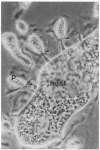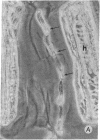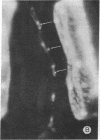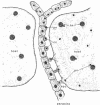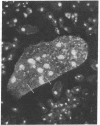Abstract
During the normal course of infection, nuclei are transferred via secondary pit connections from the parasitic marine red alga Choreocolax to its red algal host Polysiphonia. These “planetic” nuclei are transmitted by being cut off into specialized cells (conjunctor cells) that fuse with an adjacent host cell, thereby delivering parasite nuclei and other cytoplasmic organelles into host cell cytoplasm. Within the foreign cytoplasm, planetic nuclei survive for several weeks and may be active in directing the host cellular responses to infection, since these responses are seen only in host cells containing planetic nuclei. The transfer and long-term survival of a nucleus from one genus into the cytoplasm of another through mechanisms that have evolved in nature challenge our understanding of nuclear-cytoplasmic interactions and our concept of “individual.”
Keywords: Polysiphonia, Choreocolax, microspectrofluorometry
Full text
PDF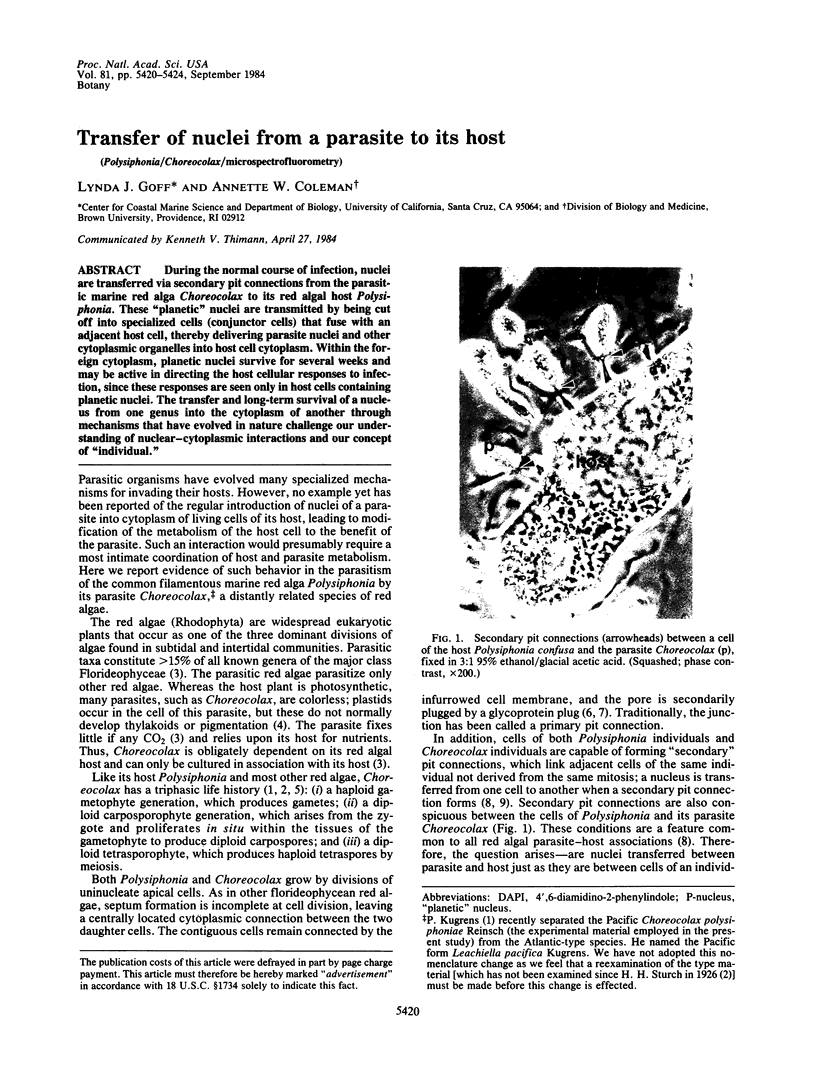
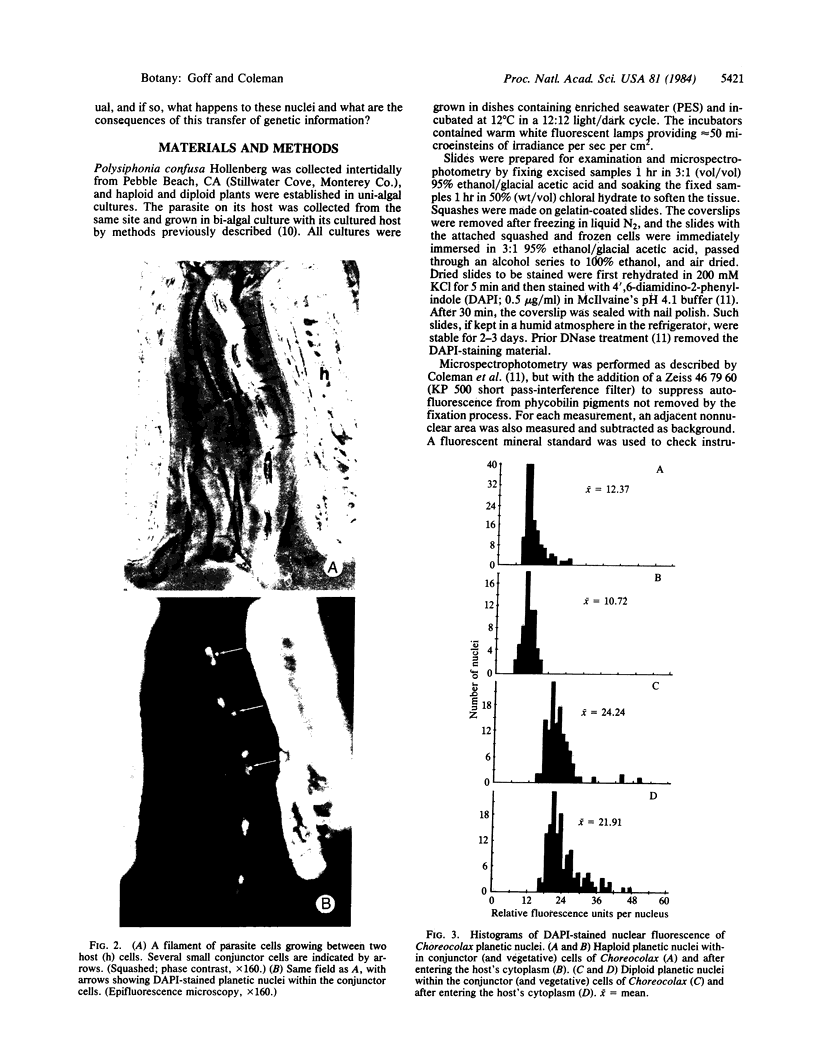

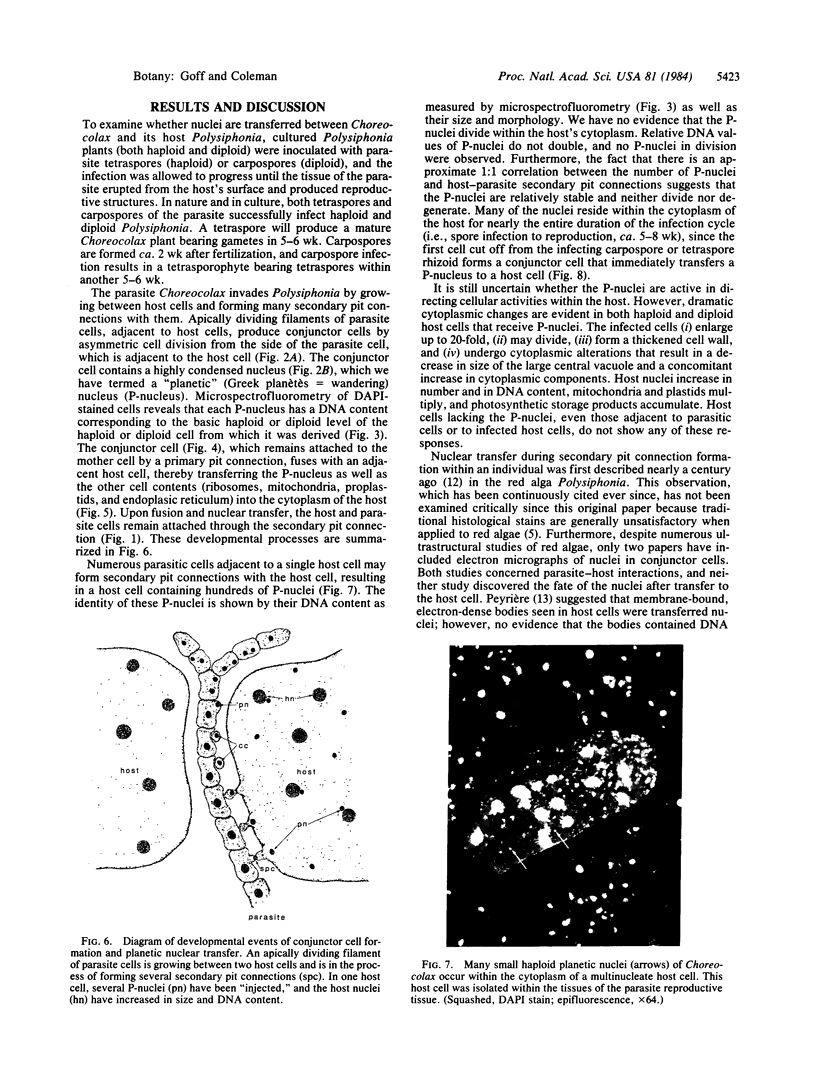
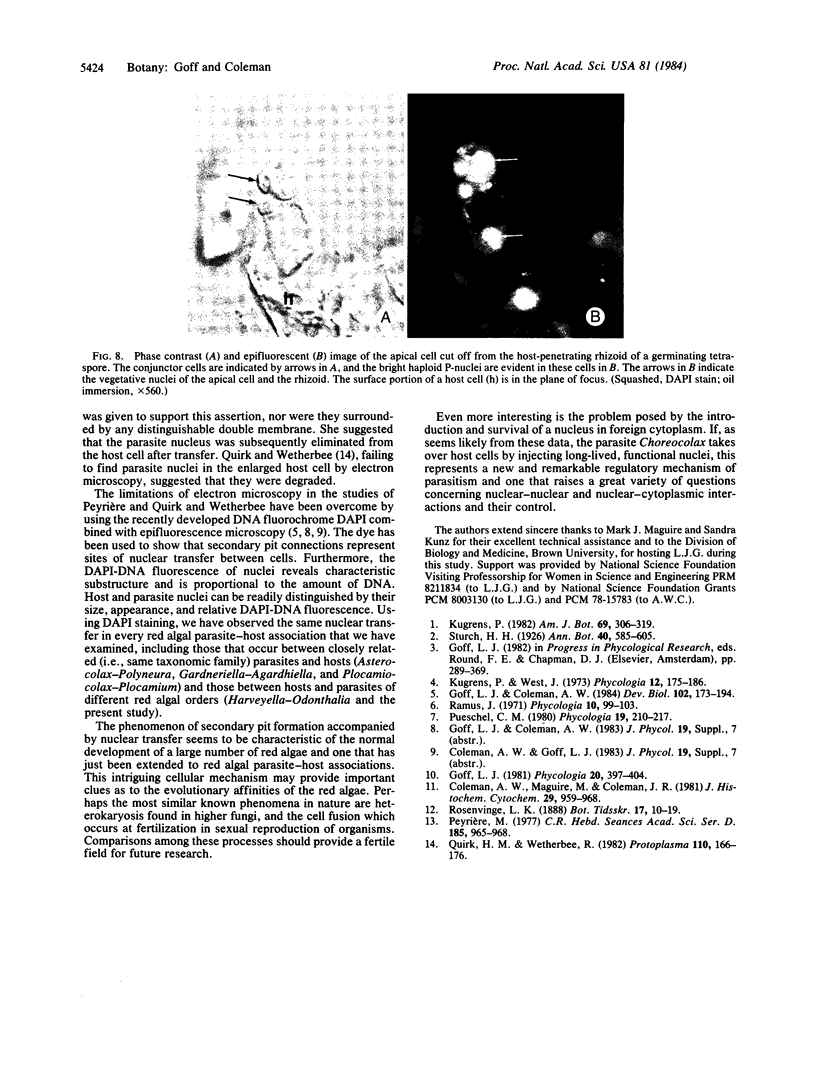
Images in this article
Selected References
These references are in PubMed. This may not be the complete list of references from this article.
- Coleman A. W., Maguire M. J., Coleman J. R. Mithramycin- and 4'-6-diamidino-2-phenylindole (DAPI)-DNA staining for fluorescence microspectrophotometric measurement of DNA in nuclei, plastids, and virus particles. J Histochem Cytochem. 1981 Aug;29(8):959–968. doi: 10.1177/29.8.6168681. [DOI] [PubMed] [Google Scholar]
- Goff L. J., Coleman A. W. Elucidation of fertilization and development in a red alga by quantitative DNA microspectrofluorometry. Dev Biol. 1984 Mar;102(1):173–194. doi: 10.1016/0012-1606(84)90183-0. [DOI] [PubMed] [Google Scholar]



